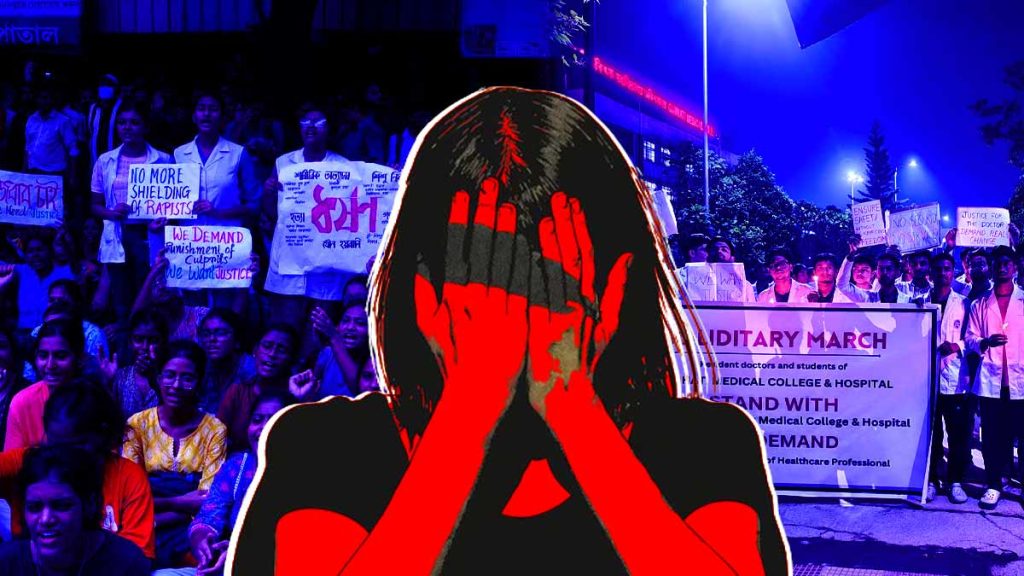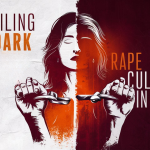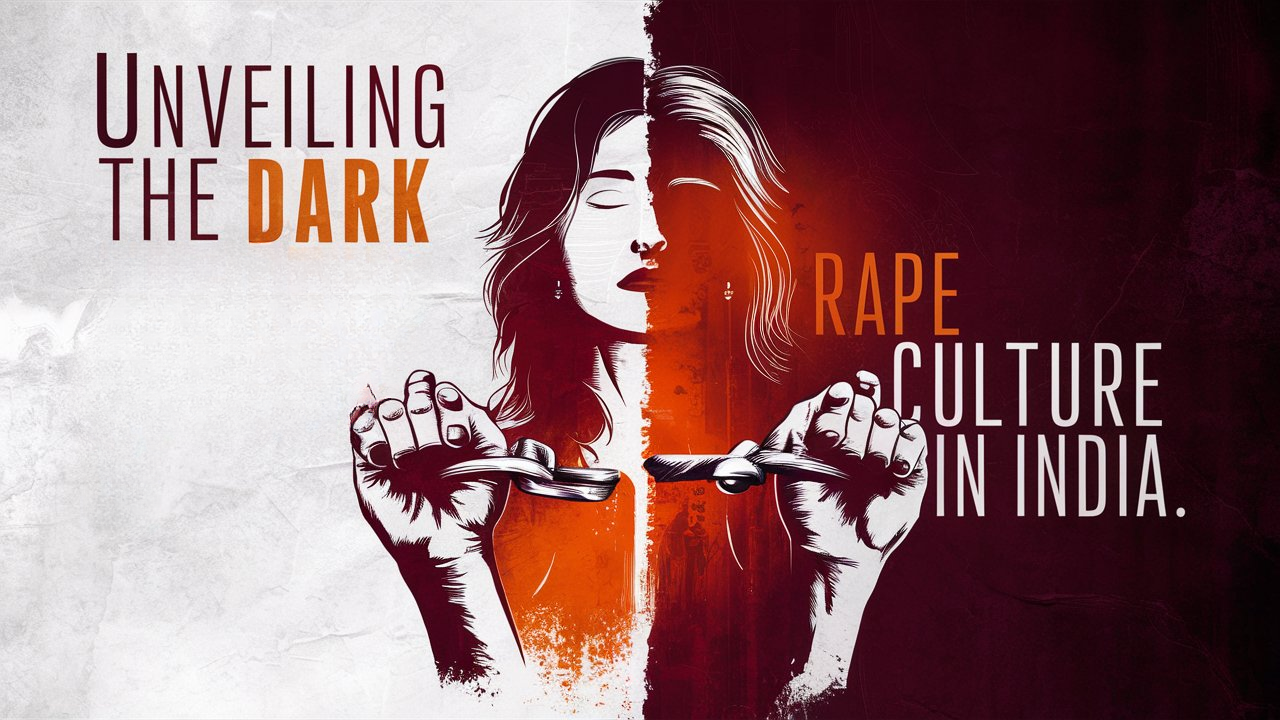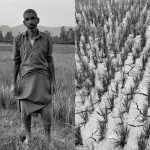Silent Scream: Unveiling the Dark Heart of Rape Case in India
Rape is a profound violation of a person’s soul and dignity, an act that shatters trust and leaves deep emotional scars. It is an assault on one’s very essence, stripping away the sense of safety and autonomy, leaving behind a haunting memory of powerlessness and pain. Rape is not just a physical attack; it’s an invasion of the most intimate part of who we are, inflicting wounds that are invisible but excruciatingly real, wounds that may take a lifetime to heal. It is an unforgivable betrayal of humanity, a dark reminder of the depths of cruelty that can reside in others.It an act that is done once to make the society dead for ever.
In India, the shadow of rape looms large, a harrowing reality that countless women and girls live with every day. The streets that should be safe, the homes that should be sanctuaries, often become the very places where this devastating violation occurs. The prevalence of rape is not just a statistic—it’s a profound human tragedy that tears at the fabric of our society. Each case is a story of shattered dreams, of trust brutally broken, and of lives forever changed. Despite the outrage following horrific incidents, like the 2012 Delhi gang rape, the echoes of these crimes persist, reminding us that the fight is far from over.India is known to be one of the most dangerous countries in the world for women.Indian women are constantly in a state of high alert when alone on the streets, at work or in the markets. India lodged average 86 rapes daily, 49 offences against women per hour in 2021: NCRB data.
Rape in India is more than just an act of violence; it is a symptom of deeply rooted gender inequality, of a culture that too often silences victims and allows perpetrators to walk free. The urgency to address this issue cannot be overstated. We are not just fighting for justice for survivors; we are fighting for the very soul of our society, for a world where no woman has to live in fear, where her voice is heard, her pain acknowledged, and her dignity fiercely protected. The time for change is now, and it is our collective responsibility to make that change a reality.It’s we people who are responding for these kinds of horrific tragedies, we are always self centered, we think that if injustice is being done to someone it is their problem until it showers over us .We as a society should come forward to end up this rape culture, inspite of fantasizing the culprit we discuss the role of victim.(Rape case in india)
The Kolkata rape and murder case, 2024 of a 31 year old trainee doctor at the M G Kar Medical College and Hospital Kolkata has shook the country once again. The case has brought the rage of doctors and non-doctors alike to the streets.
The 31 year old was on a 36 hour shift when she went to the hospital’s seminar room to rest up. The next morning her lifeless body was found lying on the floor bleeding from the lips, abdomen and private parts. The supposed safe havens i.e. hospitals are proving to be heinous for the saviours themselves. The area around seminar Hall wasn’t equipped with any CCTV.
The kolkata administration, instead of investigating in the case tried to manipulate evidence and labelled the incident as a suicide. However, investigation by a 25 member CBI committee revealed that it was an incident of a rape and murder.
The main accused, Sanjay Roy, who was a civic police volunteer has been arrested. He had been resting in the police barracks after fleeing from the crime scene.

India’s deeply rooted patriarchal values are at the heart of its pervasive rape culture, shaping societal norms and attitudes that perpetuate gender-based violence. Patriarchy, which upholds the dominance of men over women, dictates nearly every aspect of life, from family dynamics to social expectations, and fosters an environment where women are often seen as subordinate to men. This system of male dominance not only limits women’s autonomy but also normalizes their subjugation, creating fertile ground for violence against them to be tolerated, excused, or ignored.
Patriarchy enforces rigid gender roles that dictate how men and women should behave. Women are often expected to be obedient, modest, and subservient, while men are encouraged to assert dominance, control, and aggression. These roles are ingrained from a young age, teaching boys that masculinity is synonymous with power and control, and girls that their worth is tied to their ability to conform to these restrictive roles. In such a society, when women step outside these prescribed boundaries—whether by asserting their independence, rejecting traditional roles, or simply existing in public spaces—they are often met with hostility, including sexual violence.
The subordination of women is another key aspect of patriarchal values that contributes to rape culture. Women are frequently viewed as the property of men, whether as daughters, wives, or even sisters. This objectification dehumanizes women, reducing them to mere extensions of male honor or family pride rather than individuals with their own rights and agency. In this context, rape is not just a violation of a woman’s body but is often perceived as an affront to male honor, leading to responses that prioritize the reputation of families or communities over the well-being of the victim. This warped perspective fuels victim-blaming and encourages silence, as women may be pressured to endure violence rather than bring “shame” upon their families.At some instances family deny their relationshio with victim just to save their family honor in the society [The society which is constructed by us according to our own thoughts ]
Inatriarchal values also normalize violence as a tool for maintaining control and enforcing gender roles. In a society where men are seen as natural authority figures and women as inherently weaker, the use of violence to assert dominance can be seen as justifiable or even necessary. This normalization extends to sexual violence, where rape is often dismissed as a result of “natural” male urges or the victim’s failure to adhere to social norms. Such attitudes are reflected in the way rape cases are handled, where victims are often questioned about their behavior, clothing, or lifestyle, effectively shifting blame onto them rather than the perpetrators.In patriarchal societies, violence against women, including rape, is more likely to be tolerated or ignored because it reinforces the existing power structures. When women are seen as inherently less valuable or less capable of self-determination, their experiences of violence are trivialized, and their calls for justice go unanswered.
Religious texts are among the most influential sources of cultural narratives, shaping societal values and behaviors over centuries. In many of these texts, women are often depicted as obedient, pure, and loyal, primarily defined by their relationships with men.
Manusmriti: One of the most ancient and influential Hindu texts, the Manusmriti, outlines the duties and roles of men and women in society. It explicitly states that women must be under the control of their fathers in childhood, their husbands in youth, and their sons in old age. This scriptural endorsement of male dominance over women has historically reinforced the notion that women are the property of men and must be controlled, thus justifying their subordination.The Marriage of Draupadi with five brothers.
Ramayana: In the epic Ramayana, Sita, the wife of Lord Rama, is often upheld as the ideal woman, known for her unwavering loyalty and chastity. After being abducted by Ravana, Sita is subjected to a “purity test” (Agni Pariksha) to prove her faithfulness to Rama. This narrative has perpetuated the idea that a woman’s worth is tied to her purity and obedience, reinforcing the belief that women’s bodies are under male control and must conform to male-defined standards of virtue.
Many Indian folktales emphasize the concepts of honor and virtue, often linked to a woman’s sexual purity. In these stories, women who transgress societal norms or fail to adhere to their prescribed roles are punished or dishonored. For example, tales of women who are punished for being too independent or defiant reinforce the idea that women should remain submissive to avoid disgrace. This narrative underpins a culture where women are blamed for sexual violence if they are perceived as having violated social expectations.
In many Bollywood films, women are frequently objectified and reduced to mere sexual objects for the male gaze. Item numbers, where female characters are scantily clad and dance provocatively, reinforce the notion that women exist primarily for male pleasure. This objectification contributes to a culture where women’s bodies are commodified, and sexual violence is trivialized.Bollywood has a long history of romanticizing stalking and harassment, portraying these behaviors as acceptable ways for men to express their love. In films like “Dilwale Dulhania Le Jayenge” and “Raanjhanaa,” male protagonists engage in persistent pursuit or harassment of women, which is eventually rewarded with the woman’s love. This narrative perpetuates the dangerous idea that a woman’s “no” can be turned into a “yes” through persistence, thereby normalizing coercion and undermining the concept of consent.
Many Indian films reinforce traditional gender roles, where men are depicted as protectors and women as passive, dependent, or submissive. For example, in films like “Kabir Singh,”,”Animal”, toxic masculinity is glorified, and the female lead is portrayed as compliant and accepting of abusive behavior. Such portrayals reinforce the idea that women should accept male dominance, even when it manifests as violence or control.
Despite some significant legal reforms following the Nirbhaya case in 2012, India’s legal framework still faces several critical shortcomings in effectively addressing sexual violence. These gaps undermine the pursuit of justice for victims and perpetuate the challenges in eradicating rape culture. Below are some of the most pressing issues:
1:-Long Delays In Judicial the Process
One of the most significant problems is the prolonged nature of court cases related to sexual violence. Despite the establishment of fast-track courts intended to expedite the process, many cases still drag on for years, causing immense psychological and emotional distress to victims. This delay can discourage victims from pursuing legal action and can weaken the evidence over time, making it harder to secure convictions.
Example: Unnao Rape Case: The Unnao rape case involving a young woman who accused a powerful politician, Kuldeep Singh Sengar, of raping her in 2017, highlights the issue of delayed justice. Despite the seriousness of the charges, the case was marked by repeated delays and a lack of urgency from authorities. It took more than two years of persistent public and media pressure before Sengar was finally convicted in December 2019. The victim and her family faced immense hardships during this period, including a car accident that was allegedly orchestrated to silence her.
2:-Low Conviction Rates
Despite the severity of the crime, the conviction rate for rape cases in India remains disturbingly low. According to the National Crime Records Bureau (NCRB), the conviction rate for rape cases has hovered around 30% in recent years. This means that the majority of accused individuals are acquitted, often due to insufficient evidence, improper investigation, or legal loopholes.
Example: Kathua Rape Case: The 2018 Kathua rape and murder case involved an eight-year-old girl from a nomadic Muslim community. The crime, which was committed in a temple, shocked the nation. Despite the horrific nature of the crime, the trial faced significant hurdles, including attempts to obstruct justice by local lawyers and political pressure. Though some of the accused were eventually convicted, the case highlighted the difficulties in securing convictions in high-profile cases, especially when there are powerful forces working against the judicial process. The overall low conviction rates for rape cases across India remain a stark reminder of these challenges.
Convictions are often hard to secure because of challenges in gathering and presenting evidence. For instance, medical examinations may be delayed, leading to the loss of crucial physical evidence. Moreover, the reliance on outdated practices, like the “two-finger test” (which has been officially banned but still occurs in some instances), can further compromise the quality of evidence presented in court. Victim testimonies, which are critical in many cases, are frequently undermined during cross-examinations. Defense lawyers may resort to aggressive questioning that intimidates or retraumatizes victims, casting doubt on their credibility. In some cases, the societal stigma attached to rape and the fear of social ostracization lead victims to withdraw their complaints, further complicating the path to conviction.
3:-Inadequate Protection for Victims
Lack of Victim Support Services: The legal framework does not provide sufficient support services for victims of sexual violence. Many victims face threats, intimidation, or even retaliation from the accused or their associates. Without adequate protection, including witness protection programs, victims are vulnerable to further harm, which can dissuade them from pursuing justice.
Example: Unnao Rape Case: The Unnao rape case also illustrates the lack of protection for victims. The victim’s family faced severe intimidation and threats, and the victim herself was severely injured in a suspicious car accident while en route to meet her lawyer. This accident, which resulted in the death of two of her family members, is widely believed to have been an attempt to silence her. Despite the high-profile nature of the case, the victim did not receive adequate protection from the state, demonstrating the vulnerability of victims in India.
The initial contact victims have with the legal system is often through the police, who may be insensitive, dismissive, or even hostile. Reports of victims being harassed or pressured to drop charges are not uncommon. This insensitivity can deter victims from filing complaints and can lead to further victimization within the legal process.Even after reporting the crime, victims frequently face stigmatization and victim-blaming. Society often scrutinizes the victim’s character, behavior, and background rather than focusing on the actions of the perpetrator. This social stigma is mirrored in the legal process, where the victim’s life is put on trial, leading to a traumatic and often re-victimizing experience in court.
4:-Inconsistent Implementation of Laws
While India has introduced progressive laws, such as the Criminal Law (Amendment) Act, 2013, which broadened the definition of rape and introduced stricter penalties, the implementation of these laws remains inconsistent. The effectiveness of legal reforms is often compromised by a lack of proper training for law enforcement and judicial personnel, who may not fully understand or respect the spirit of these laws.
Example: Marital Rape in India: Despite significant legal reforms, marital rape remains legal in India, reflecting inconsistent implementation of laws protecting women from sexual violence. While the Criminal Law (Amendment) Act, 2013, expanded the definition of rape and imposed stricter penalties, it did not address marital rape, which remains a significant issue in India. This gap in the law highlights the inconsistency in applying principles of consent and protection equally to all women, regardless of their marital status.
The application of laws can vary significantly across different regions of India. In rural areas, where traditional and patriarchal norms may be more deeply entrenched, law enforcement officials might be more reluctant to act against perpetrators, particularly if they belong to powerful or influential communities. This uneven application of the law leads to a lack of uniform protection for victims nationwide.
Example: Regional Disparities in Law Enforcement: In many rural areas of India, traditional and patriarchal norms often hinder the effective implementation of laws designed to protect women from sexual violence. For instance, in the case of Bhanwari Devi, a social worker who was gang-raped in Rajasthan in 1992, local law enforcement initially refused to register her complaint because the accused belonged to a higher caste. This case eventually led to the landmark Vishakha Guidelines against sexual harassment in the workplace, but it also underscored the challenges of ensuring that laws are applied uniformly across different regions and communities in India.
Highlighting Some Of The Known Cases Of Rape In India
1:-Mathura Rape case 1972
The Mathura rape case involved a young Adivasi girl named Mathura, who was allegedly raped by two policemen inside a police station in Maharashtra in 1972. The case became highly controversial due to the court’s handling of the evidence and the interpretation of “consent.”
Initially, the trial court acquitted the accused officers, arguing that Mathura had not resisted the sexual advances, and therefore, the act was consensual. The Bombay High Court later overturned this decision, convicting the policemen based on the understanding that the power dynamics and coercive environment in a police station negated any notion of consent.However, the Supreme Court of India in 1979 acquitted the accused once again, reasoning that the absence of physical resistance implied consent, and controversially noted that Mathura was “habituated to sexual intercourse.” This ruling sparked national outrage and led to widespread protests, with activists and legal scholars criticizing the judgment for its flawed understanding of consent and the victim’s rights.The public outcry from this case was a catalyst for legal reforms in India. In 1983, the Indian Penal Code and the Indian Evidence Act were amended to address custodial rape more effectively, shifting the burden of proof onto the accused in such cases and recognizing the inherent power imbalances in situations of custodial authority.The Mathura case remains a significant chapter in India’s legal and feminist history, symbolizing the struggles faced by rape survivors in seeking justice and the critical need for systemic change.
2:-Aruna Shaumbaug Case 1973
Aruna Shanbaug was a young nurse working at Mumbai’s King Edward Memorial (KEM) Hospital when she was brutally attacked in 1973 by a ward boy. The attacker choked her with a dog chain and sexually assaulted her, cutting off oxygen to her brain, which left her in a vegetative state. She remained in this condition for 42 years, being cared for by the hospital staff until her death in 2015.
In 2011, a plea for euthanasia was filed on her behalf by journalist Pinki Virani, who argued that Aruna should be allowed to die with dignity. The Supreme Court of India rejected the petition for active euthanasia but laid down guidelines for passive euthanasia, allowing withdrawal of life support under certain circumstances. This landmark judgment made passive euthanasia legal in India, subject to stringent conditions, and marked the first time the issue was addressed by the Indian judiciary.
The case of Aruna Shanbaug brought attention to the issues of medical ethics, the rights of patients in a vegetative state, and the need for clear legal frameworks regarding euthanasia in India. It also highlighted the dedication of the KEM Hospital staff, who cared for Aruna for over four decades. The case remains a crucial reference point in discussions about euthanasia and the rights of patients in India
3:-Nirbhaya Case 2012
The Nirbhaya case of 2012 is one of the most infamous and heartbreaking incidents of sexual violence in India’s history, which sparked widespread outrage and led to significant legal and societal changes.
On December 16, 2012, a 23-year-old physiotherapy intern, later referred to as “Nirbhaya” (meaning “fearless”), was brutally gang-raped and assaulted on a moving bus in Delhi by six men, including a juvenile. She was returning home after watching a movie with a male friend, who was also severely beaten. The attackers used an iron rod to inflict severe internal injuries on Nirbhaya and then threw her and her friend out of the bus, leaving them for dead.
Nirbhaya was rushed to the hospital, where she fought for her life for nearly two weeks before succumbing to her injuries on December 29, 2012. The brutality of the crime shocked the nation and led to massive protests across India, demanding justice for Nirbhaya and stronger laws to protect women.
The public outrage led to the formation of the Justice Verma Committee, which recommended extensive legal reforms, including stricter laws on sexual violence, better police procedures, and fast-track courts for rape cases. As a result, the Criminal Law (Amendment) Act, 2013, was passed, introducing harsher penalties for rape, including the death penalty in cases where the victim dies or is left in a vegetative state.All six attackers were arrested, and the trial was conducted in a fast-track court. Four of the adult men were found guilty and sentenced to death, while one died in custody, allegedly by suicide. The juvenile, being under 18 at the time of the crime, was sentenced to three years in a reform facility, the maximum sentence allowed under the Juvenile Justice Act.
The Supreme Court of India upheld the death sentences in 2017, and after numerous appeals and delays, the four convicts were executed in March 2020.The Nirbhaya case became a turning point in India’s approach to sexual violence, leading to stronger laws and greater awareness of women’s rights. It also highlighted the deep-rooted issues of gender inequality and the need for societal change to ensure the safety and dignity of women. The case continues to serve as a symbol of the fight against sexual violence in India.
4:-Asifa Bano Case 2018
The Asifa Bano case involved the abduction, rape, and murder of an eight-year-old girl from the Bakarwal Muslim nomadic community in January 2018 in the Kathua district of Jammu and Kashmir. Asifa was kidnapped while grazing her family’s horses and was held captive in a local temple. Over several days, she was drugged, repeatedly raped, and eventually murdered by a group of men, including a retired government official, a police officer, and a juvenile. The crime was intended to drive the Bakarwal community out of the area.
The case quickly became embroiled in communal tensions due to the religious identities of the victim and the accused. Protests erupted across India, not only condemning the crime but also in support of the accused, with some political figures and local lawyers arguing that the accused were being framed. These protests, organized by the Hindu Ekta Manch, further polarized the situation and delayed the pursuit of justice.The investigation, initially marred by attempts to cover up the crime, was eventually taken over by the Jammu and Kashmir Police’s Crime Branch. In June 2019, a special court convicted six of the eight accused, sentencing three main perpetrators to life imprisonment and three others to five years for destroying evidence. The juvenile accused was tried separately.The Asifa Bano case highlighted the deep communal divisions in India and the vulnerability of marginalized communities, particularly in conflict zones. It also underscored the use of gender violence as a tool for communal intimidation and the challenges in securing justice in a polarized environment. The case remains a grim reminder of the intersection of gender, religion, and politics in India.
5:-Hathras Case 2020
The Hathras case of 2020 is a deeply disturbing incident of sexual violence in India that sparked national outrage and raised serious concerns about the treatment of Dalit women and the conduct of law enforcement authorities.
In September 2020, a 19-year-old Dalit woman from Hathras, Uttar Pradesh, was brutally assaulted and allegedly gang-raped by four upper-caste men in a field near her home. The victim suffered severe injuries to her spine and neck, leaving her paralyzed and in critical condition. After fighting for her life for two weeks, she succumbed to her injuries in a hospital in Delhi on September 29, 2020.
The case drew widespread attention not only because of the heinous nature of the crime but also due to the actions of the local authorities. The Uttar Pradesh police and administration were heavily criticized for their handling of the case. The victim’s family alleged that the police were slow to act, attempted to downplay the crime, and initially denied that rape had occurred.The situation escalated when the police cremated the victim’s body in the middle of the night without her family’s consent, allegedly to avoid public unrest. This move was seen as an attempt to suppress evidence and sparked nationwide protests and condemnation from various quarters, including activists, politicians, and the general public.The incident led to intense scrutiny of the treatment of Dalit women in India and the broader issues of caste-based violence and discrimination. The Uttar Pradesh government initially dismissed allegations of rape, but after public outcry and pressure, the case was handed over to the Central Bureau of Investigation (CBI) for further investigation.The case also had significant political implications, with various political parties and social organizations condemning the Uttar Pradesh government’s handling of the situation and highlighting the systemic issues of caste oppression and gender violence in India.
The Hathras case reignited debates on the safety of women, particularly those from marginalized communities, and the failure of the justice system to protect the most vulnerable. It highlighted the deep-rooted caste-based discrimination that continues to plague Indian society and the urgent need for reforms to ensure justice and equality for all citizens.
6:-Bilkis Bano Case 2002
The Bilkis Bano case dates back to the 2002 Gujarat riots, a period of intense communal violence that erupted following the burning of a train in Godhra. During the riots, Bilkis Bano, who was then 19 years old and pregnant, was gang-raped by a group of men in her village of Randhikpur, Gujarat. In addition to being raped, her family members, including her three-year-old daughter, were brutally murdered. Bilkis Bano was left severely injured and had to flee her village to escape further violence.
The case initially faced numerous obstacles, including intimidation and threats against witnesses, inadequate police investigations, and attempts to suppress evidence. Bilkis Bano’s pursuit of justice involved several years of legal battles. Her case was eventually transferred to the Supreme Court of India, which ordered a retrial outside Gujarat due to concerns about impartiality and threats.
In 2008, a special court in Mumbai convicted 11 of the accused for their involvement in the rape and murders, sentencing them to life imprisonment. The verdict was seen as a significant victory for Bilkis Bano and human rights advocates, but the legal process remained fraught with , including appeals and attempts by the accused to secure clemency.The Bilkis Bano case has been highly controversial, particularly concerning the release of the convicted rapists. In August 2022, the Gujarat government announced the release of 11 men who had been convicted for their roles in the gang-rape and murders. This decision led to widespread outrage and protests from activists, survivors of sexual violence, and the public. Critics argued that the release undermined justice and sent a harmful message about the protection of victims’ rights.
The Bilkis Bano case remains a crucial example of the challenges faced by survivors of sexual violence, especially in contexts of communal violence and systemic injustice. It has highlighted the need for robust legal frameworks to protect victims, ensure fair trials, and address the deep-seated issues of communal violence and discrimination in India. The case also underscores the importance of supporting survivors in their quest for justice and the need for accountability at all levels of the judicial and political systems
A toothless set of laws and judicial verdicts in a ruthless society won’t and has not sufficed to provide for a safer place for the people of this country, especially women. Justice has become a mere myth that is served to all but sustained for none.






